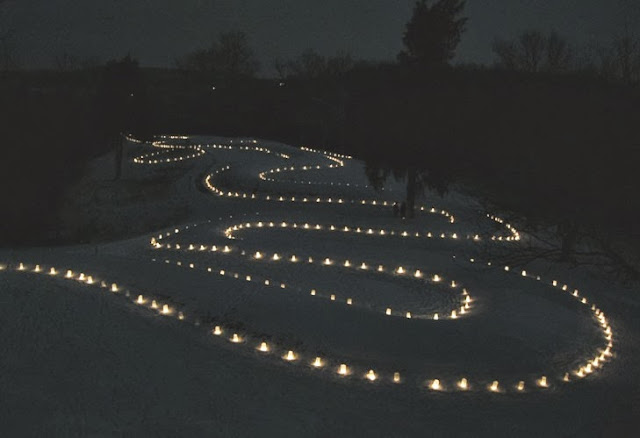 |
| Saint Lucia Swedish Celebration |
Solstice Blessings to All
On this, the longest and darkest night, we light our candles and our bonfires, as ancestors have done for uncounted centuries, around the world and in many languages, before us, in the depths of winter, an affirmation of light and warmth and the Sun's return. I think what is important to affirm is also what Light each of us wants to ignite within ourselves, that might illuminate not only our own lives, but the lives of other Beings of the Earth. And I also reflect on the healing and creative powers of what poet David Whyte called "sweet darkness", the times of silence and incubation that are wedded to the times of illumination.
"To go in the dark with a light
is to know the light.
is to know the light.
To know the dark, go dark.
Go without sight, and find
that the dark, too, blooms and sings,
and is traveled by dark feet and dark wings."
Go without sight, and find
that the dark, too, blooms and sings,
and is traveled by dark feet and dark wings."
Wendell Berry
 |
| Winter Solstice inside Newgrange |
SWEET DARKNESS
When your eyes are tired
the world is tired also.
When your vision has gone
no part of the world can find you.
Time to go into the dark
where the night has eyes to recognize its own.
There you can be sure you are not beyond love.
The dark will be your womb tonight.
The night will give you a horizon further than you can see.
You must learn one thing:
the world was made to be free in.
Give up all the other worlds
except the one to which you belong.
Sometimes it takes darkness
and the sweet confinement of your aloneness
to learn
anything or anyone
that does not bring you alive
is too small for you.
David Whyte




















